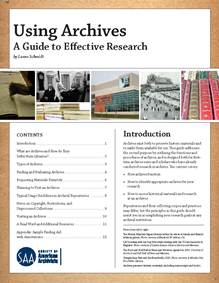
An archives is a place where people can go to gather firsthand facts, data, and evidence from letters, reports, notes, memos, photographs, and other primary sources (from the National Archives).
Archives are different from libraries in several respects. Libraries can generally be defined as “collections of books and/or other print or nonprint materials organized and maintained for use.” Patrons of those libraries can access materials at the library, via the Internet, or by checking them out for home use. Libraries exist to make their collections available to the people they serve.
Archives also exist to make their collections available to people, but differ from libraries in both the types of materials they hold, and the way materials are accessed.
Let's look at the differences between an archives and a library.
Archives can hold both published and unpublished materials, and those materials can be in any format. Some examples are manuscripts, letters, photographs, moving image and sound materials, artwork, books, diaries, artifacts, and the digital equivalents of all of these things. Materials in an archives are often unique, specialized, or rare objects, meaning very few of them exist in the world, or they are the only ones of their kind.
Archivists are in charge of an archives basic organization based on provenance and original order.
Since materials in archival collections are unique, the people (archivists) in charge of caring for those materials strive to preserve them for use today, and for future generations of researchers. Archives have specific guidelines for how people may use collections (which will be discussed later in this guide) to protect the materials from physical damage and theft, keeping them and their content accessible for posterity.
Archives collect material based on their own special set of criteria. There are many archives with a very specific scope of collecting (e.g.The Archive for Research in Archetypical Symbolism) and some that are very broad (e.g. National Archives). Some types of archives include:
See a list of archives in the United States (not complete)





When using an archives there are some important things to consider:
